|
outcrop
photographs
|
core photographs
|
comments,
questions and your notes
|
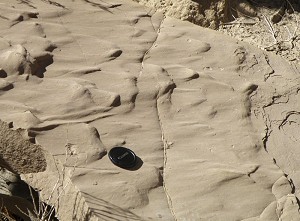
loose block: base of sandstone bed; lens cap 50mm diam |
|
These
structures represent a sand infill on top of an eroded mud bed. Do they
give us a current direction? Mark this on the printout. When recording sedimentary
structures, always include a description of size. |
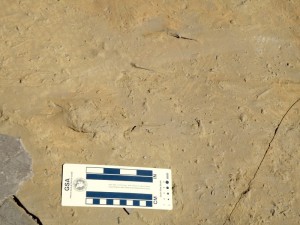
loose block: base of sandstone bed |
|
These
structures represent a sand infill on top of a mud bed. There may be more
than one structure present. Think about processes. |
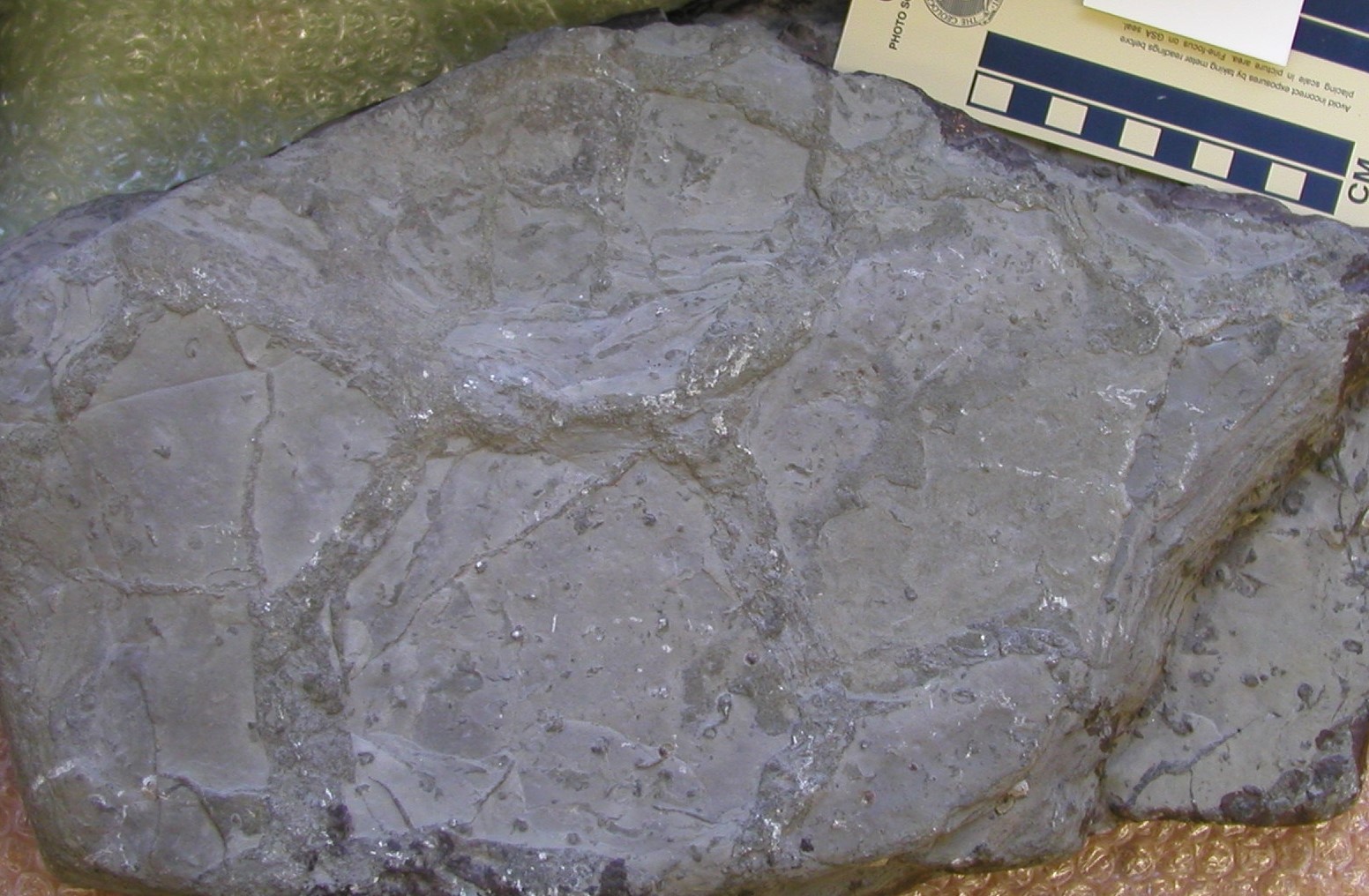
loose block: top of sandstone
bed |
|
Most
of the surface is of very fine sandstone to siltstone. The darker linear
structures are of fine to medium sandstone. What processes and conditions
do these structures represent? |
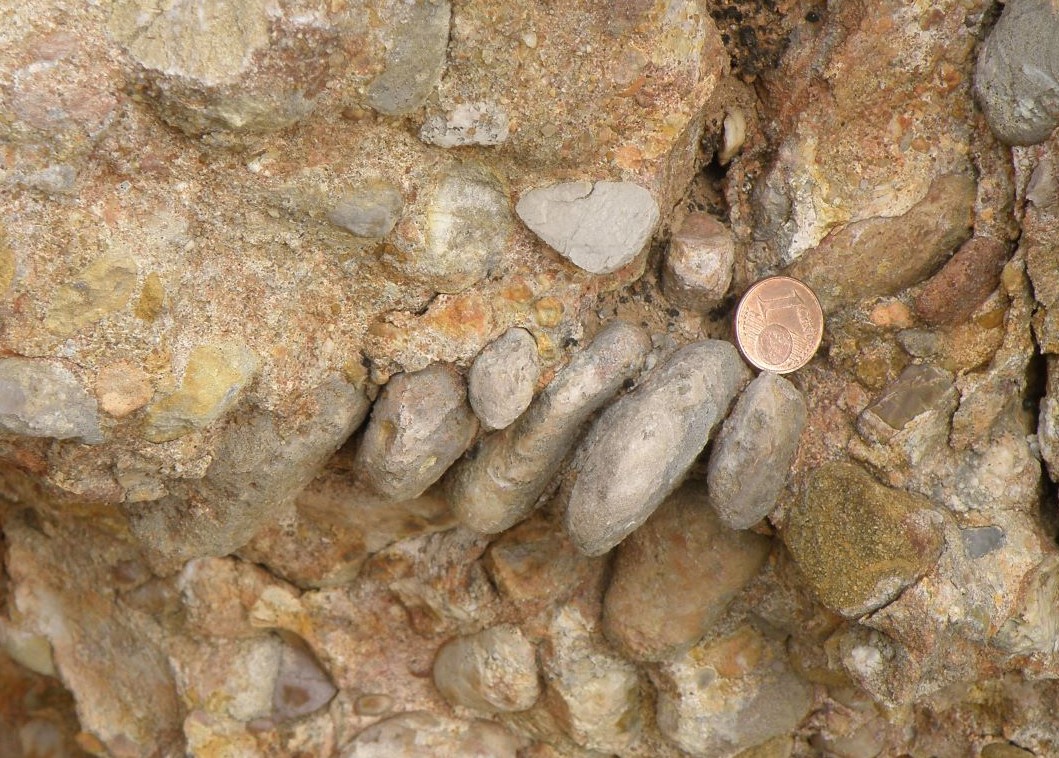
section at 90° to bedding;
coin 16 mm diam |
|
A common
structure in gravels and conglomerates. Can we infer current direction from
this? If so, mark it on the photo. |
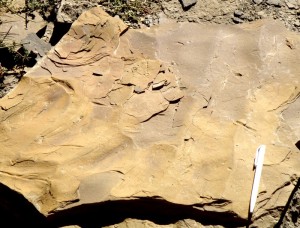
Loose block: top of sandstone bed |
|
Is
this a wave- or current-generated structure? What can you say about sediment
transport direction(s). What else can you measure? Annotate the printout. |
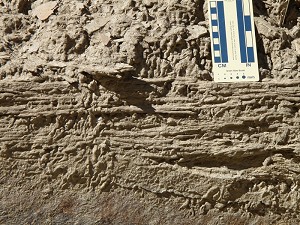
section at 90° to bedding |
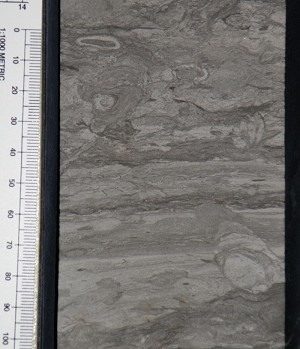 |
After
the deposition of these beds, what processes have occurred, and what are
the resulting structures? |
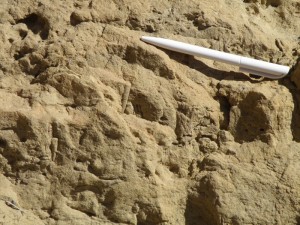
section at 90° to bedding
|
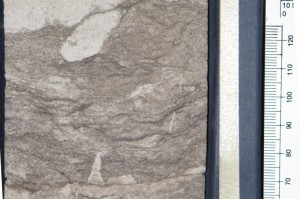 |
After
the deposition of these beds, what processes have occurred, and what are
the resulting structures? |
|
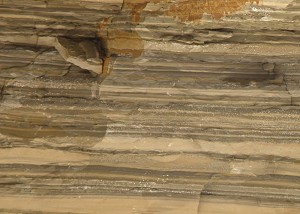
section at 90° to bedding; section 20cm high
|
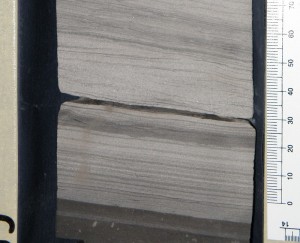 |
Regular
alternation of laminations of sandstone (light) and mudstone (dark). What
does this tell us about changing conditions during deposition? In what depositional
settings might this occur? Name the structures. Flow regimes? |
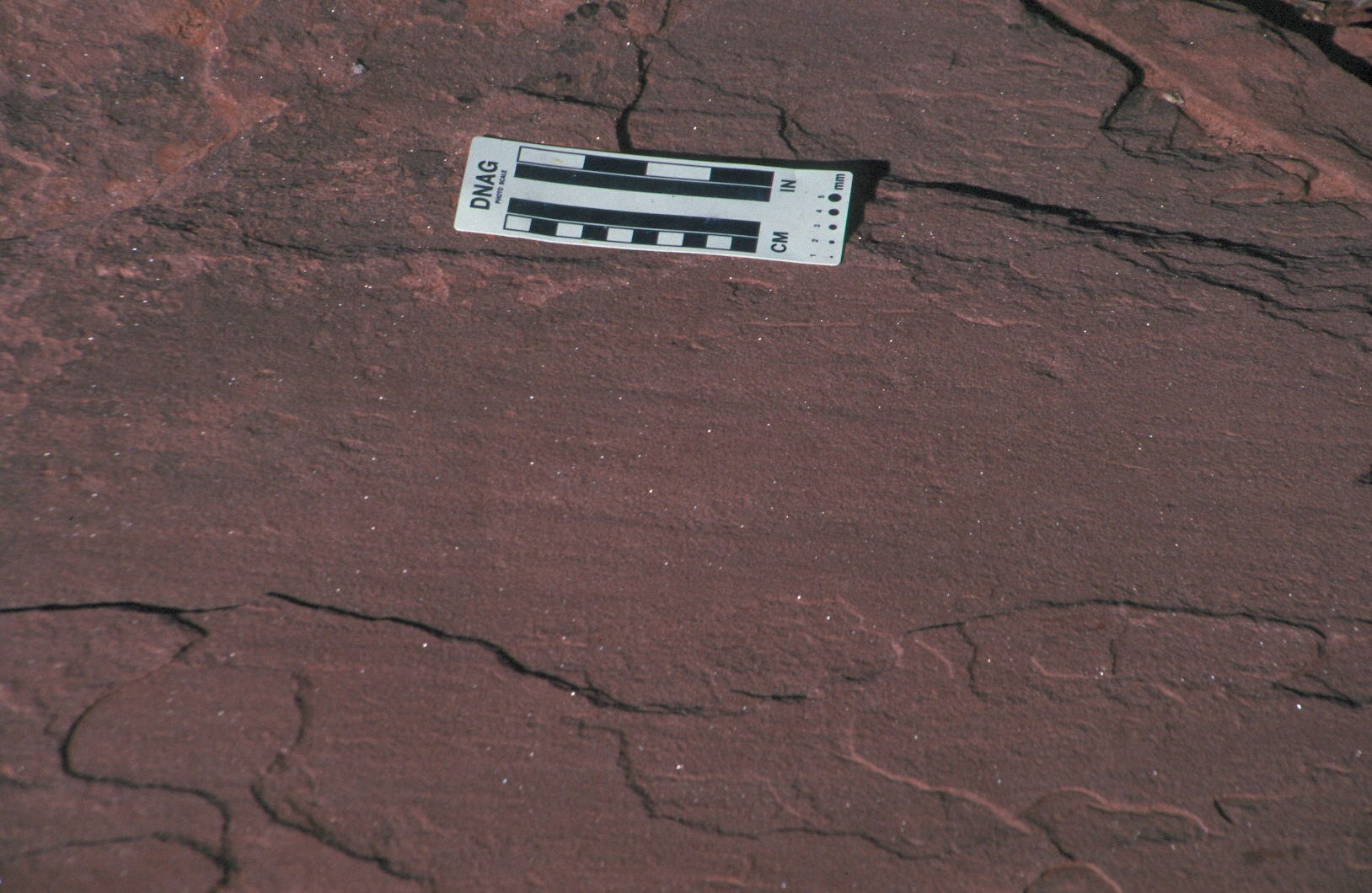
view of top of a sandstone bed |
|
Medium
to coarse micaceous sandstone, thinly laminated. Flow regime? Current direction? |
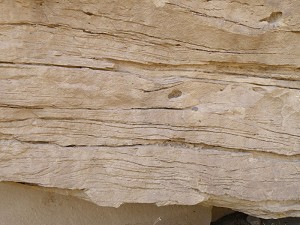
section at 90° to bedding;
section 50cm high |
|
Look
at the enlarged image. Note the geometry of the sandstone and mudstone components
- by this, we mean describe properties like shape and lateral continuity.
Identify the structures, and comment on the changing processes and conditions
which formed them. |
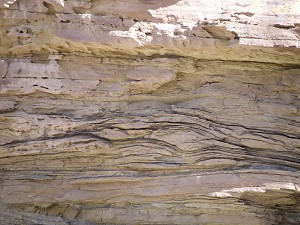
Section at 90° to bedding;
section 80cm high |
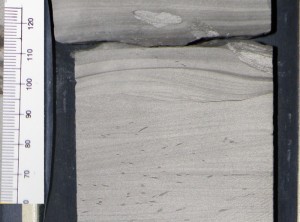 |
Study
the enlarged images. Note the geometry of the sandstone and mudstone components.
Identify the structures, and comment on the changing processes and conditions
which formed them. What are the elongate dark structures in the lower part
of the core? |
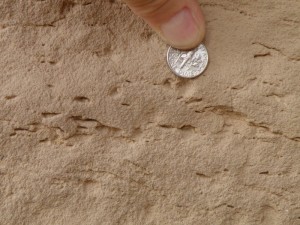
section at 90° to bedding;
coin 18mm diam |
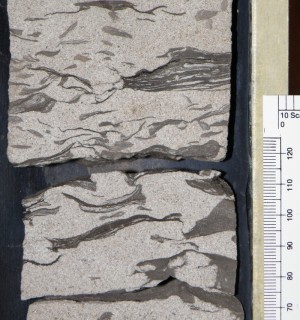 |
The
weathered-out hollows in the outcrop photo represent the dark features seen
in the core. What are they, and what happened to them after deposition? |
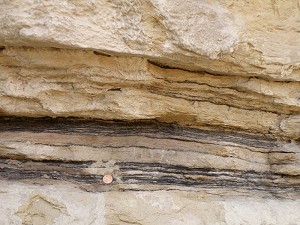
section at 90° to bedding;
coin 19mm diam. |
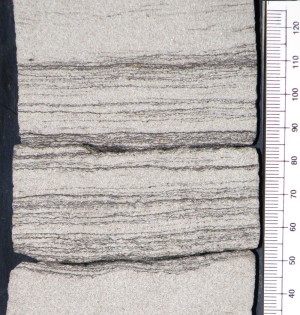 |
In
these photos, the dark laminae are not mudstone; they consist of fragmented
coaly material. Processes? Flow regime? |
|
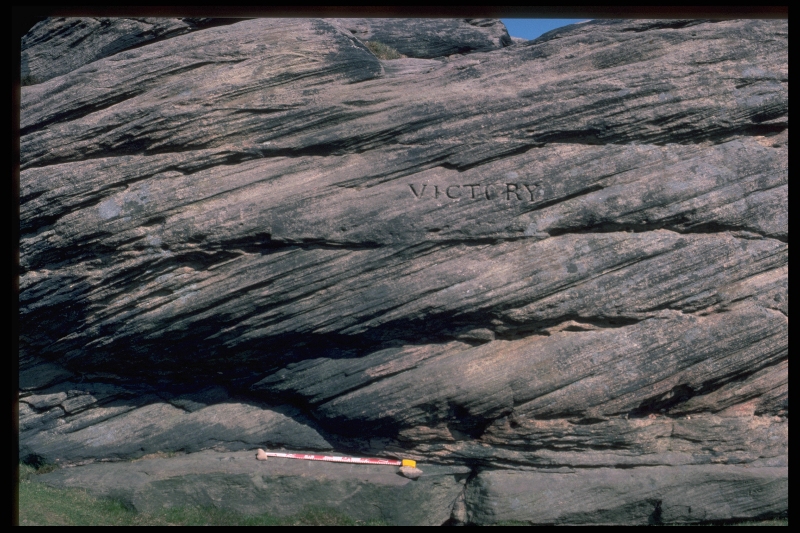
Scale: red & white bars
are 5cm long
|
|
These
features are the internal structure of a particular bedform - which? What
was the minimum height of these bedforms? Flow regime? Current direction? |
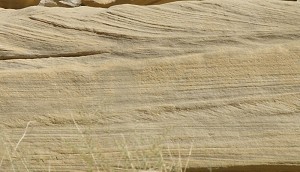
section at 90° to bedding;
section 1m high |
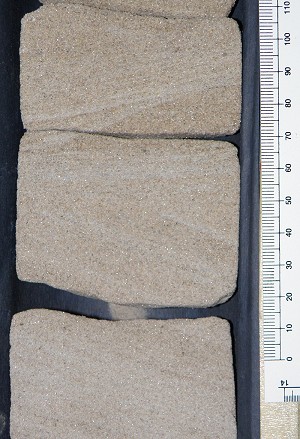 |
The
inclined features are the internal structure of a particular bedform - which?
Flow regime? Current direction? When recording sedimentary structures, always
include a description of size: e.g. thickness of individual beds; thickness
of sets of beds. |
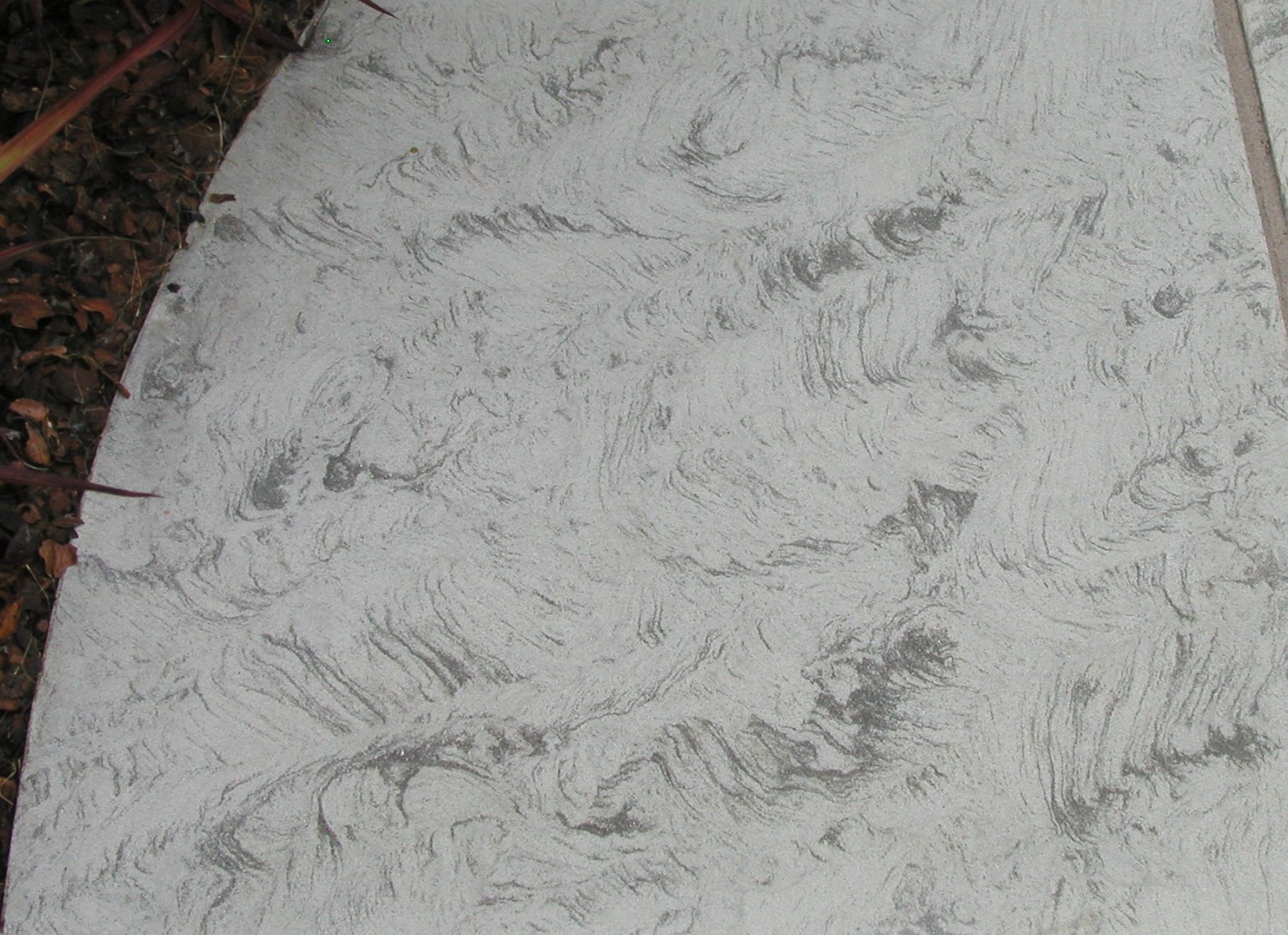
plan view, parallel
to bedding; makes a nice table! Scale: 60cm wide |
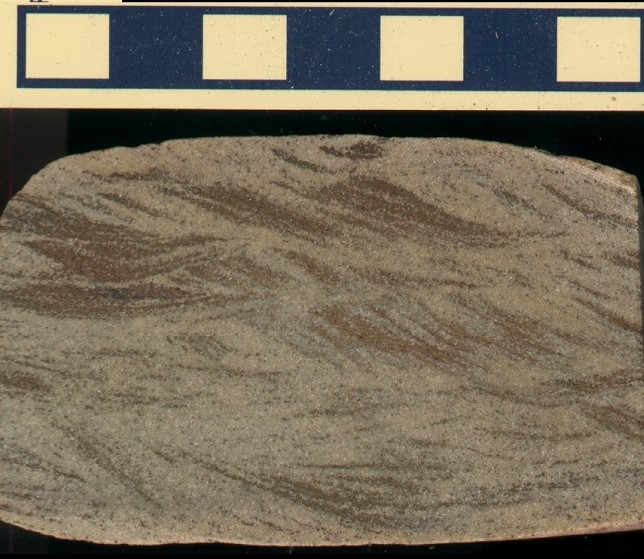
Scale in cm |
When
naming this structure, bear in mind the scale. Flow regime? Current direction? |
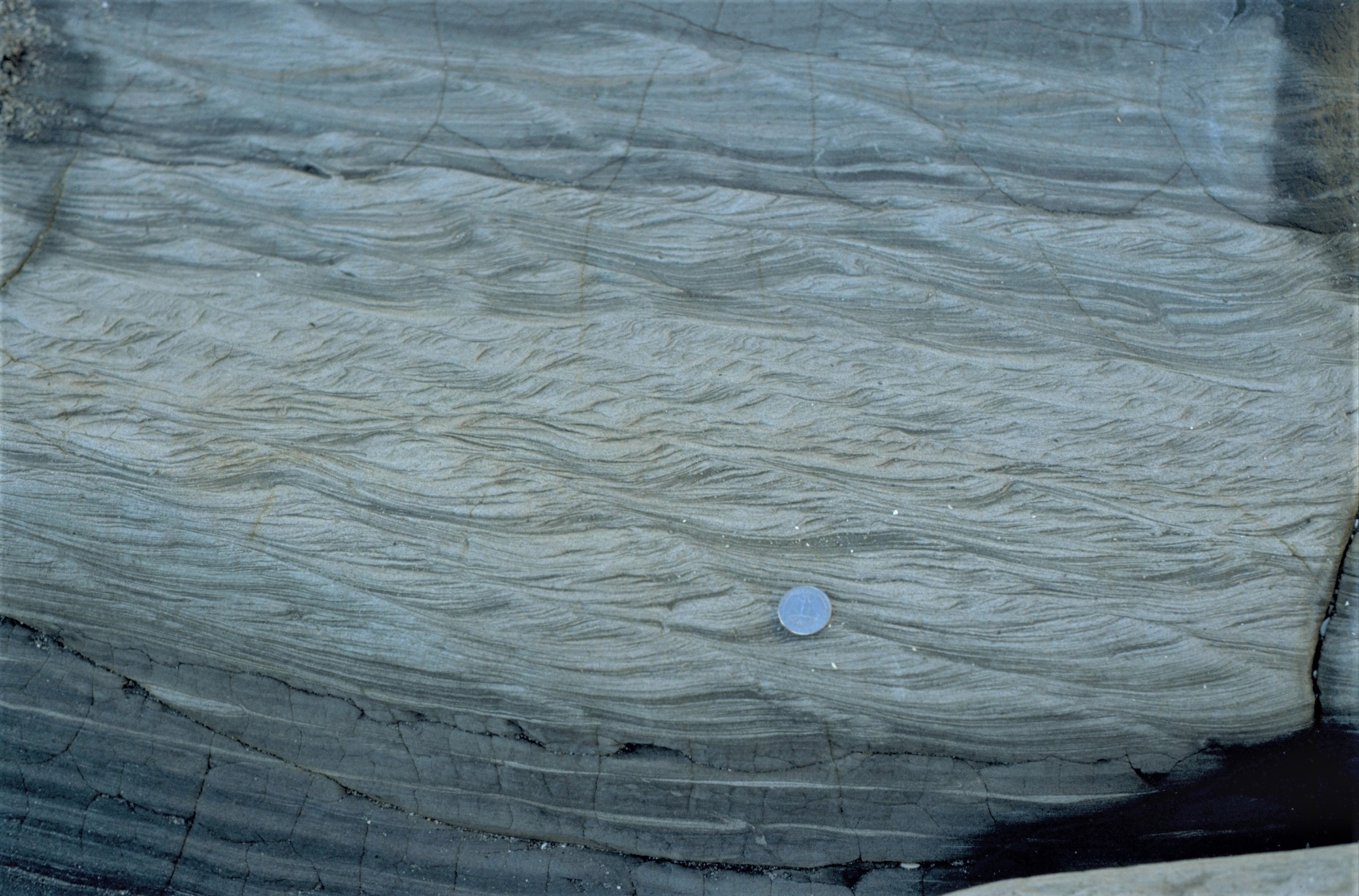
section at 90° to bedding;
coin 25mm diam |
|
The
way these structures are arranged tells us something about sedimentation
rates - what? Flow regime? Current direction? |
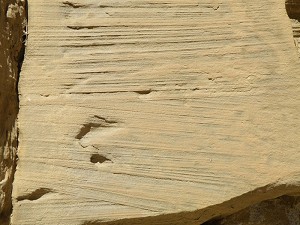
section at 90° to bedding;
section 1.5m high |
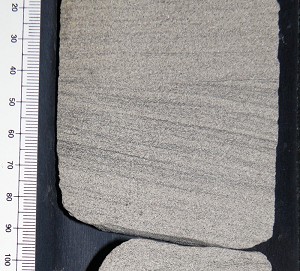 |
A key
feature here is the relative dips of the bedding, and the nature of the
contacts between sets of beds. Describe these. Give the features a name.
Under what conditions might they have formed? |
|
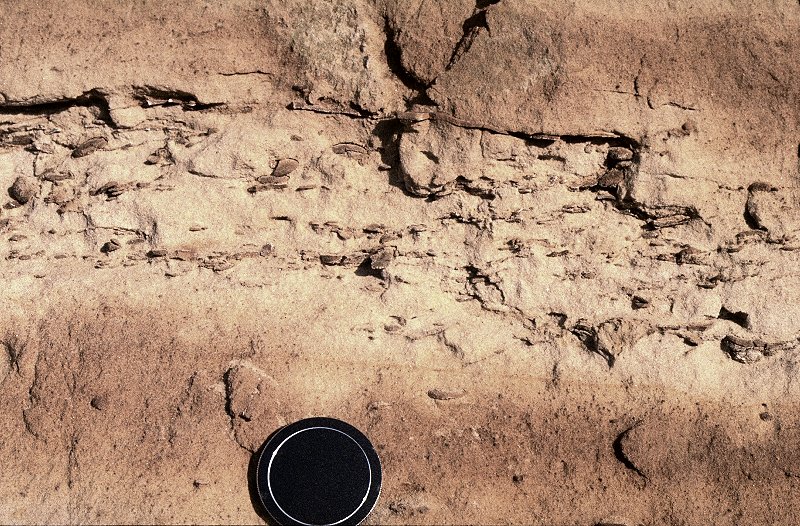
section at 90° to bedding;
lens cap 50mm diam
|
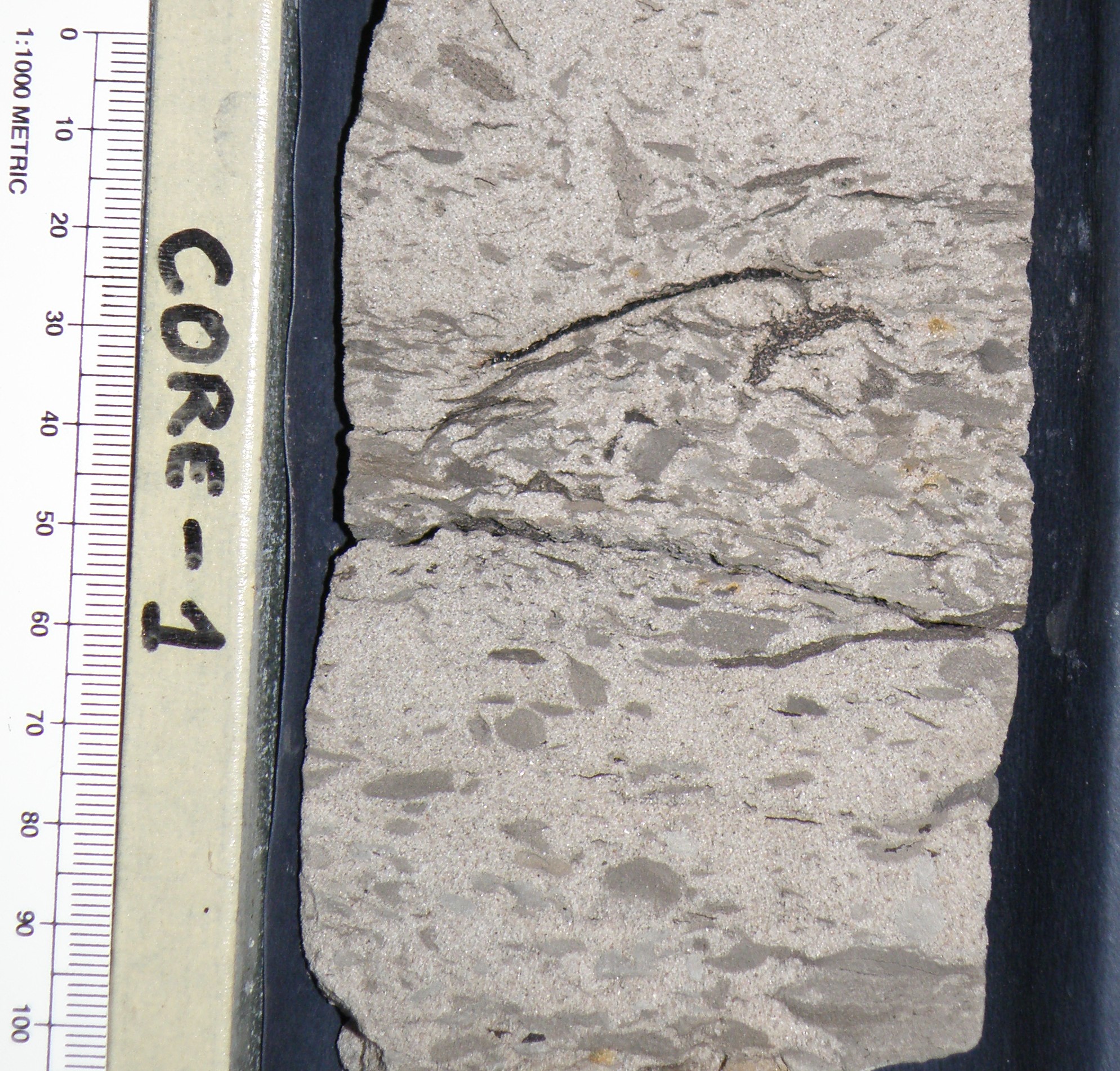 |
In
these photos, we are interested in the discontinuous darker objects: they
are made of a material with finer grain size than the sand surrounding them.
In the core photo, concentrate on the grey objects - we encountered the
black wispy objects in an earlier question. What sequence of processes is
represented here? |
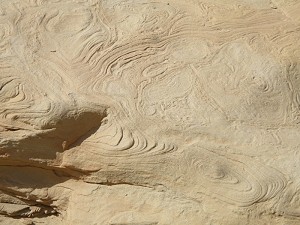
section at 90° to bedding;
section 40 cm high |
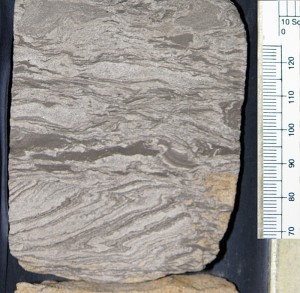 |
These
are post-depositional structures. Describe them, and explain what happened
to the bedded sediment after deposition. |




























